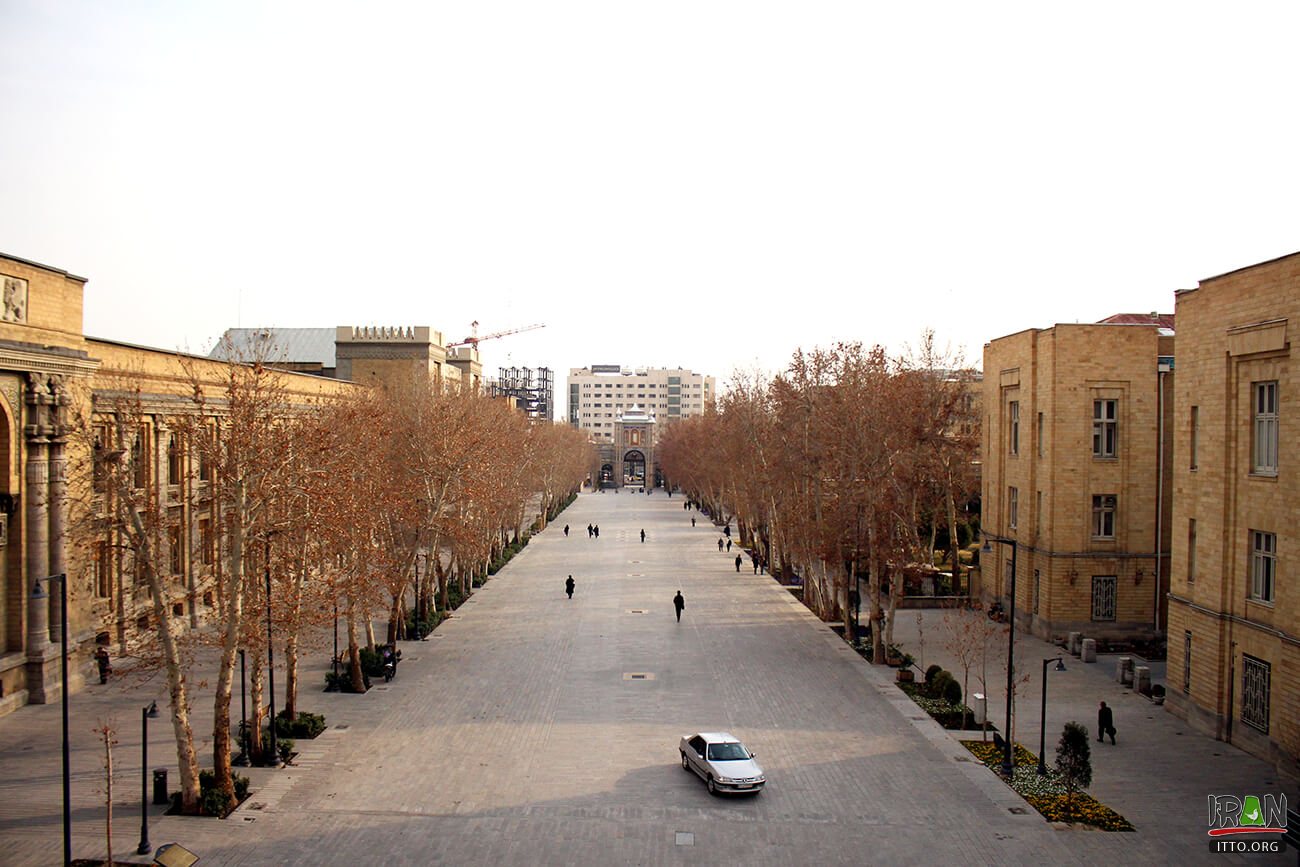Bagh-e Melli (National Garden) is a magnificent brick gate, decorated with colorful tiles and multiple inscriptions is one of old symbols of Tehran built based on direct order of Reza Shah by Jafar Khan Kashani and Germans cooperation in a mixture of Iranian–European architectural styles especially of tile works and Kolah Farangi in Qajar era between 1920 to 1923.
The building was built as a gateway to the Parade Square (Mashq square or Meydan-e Mashq) that was a military area belonged to the armies therefore it has been named as "Mashq Square Gate". It was designed with a combination of Iranian and European architecture especially the tile working of the pavilion. Pictures of occupying Tehran in 1920 overthrow, along with the angels of victory and Cossack’s soldiers are illustrated with tiles on the gate.

The gorgeous facade of the National Garden is a historical compound in downtown Tehran
Shortly after building the gate, the first public garden entitled "National Garden" was founded in the lands of Mashq square and so it has been renamed to "The Gate of National Garden". It was then turned into a public park for a short while, and eventually important governmental offices and museums were constructed around it.
In the upper part of the building, monitoring station, timpanist and the armed forces passage have been designed. The Gate of National Garden has a gateway for car pass and two for pedestrians.
Building number 9 of the Ministry of Foreign Affairs (formerly the "Police House"), the University of Art (formerly the "Cossack House"), Malek National Museum, Post and Communication Museum, and the National Museum are situated in the compound.
This structure was registered as a national heritage in 1997 and was renovated in 2015.

